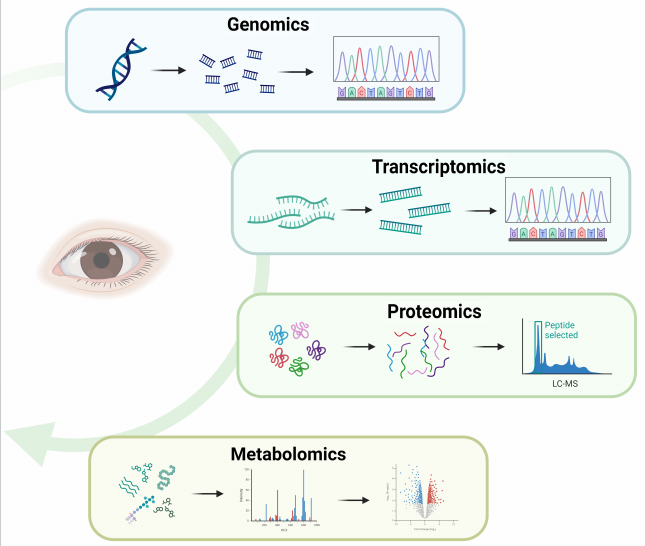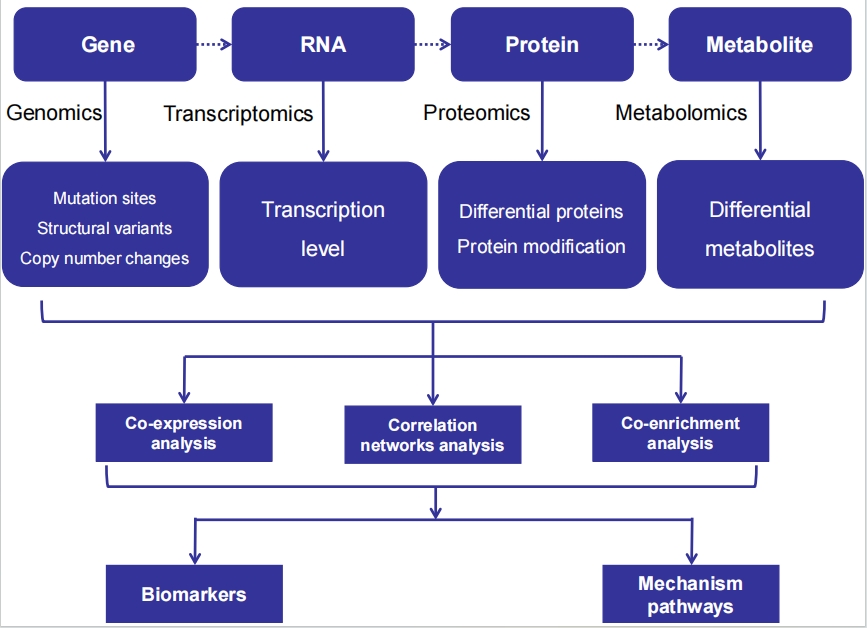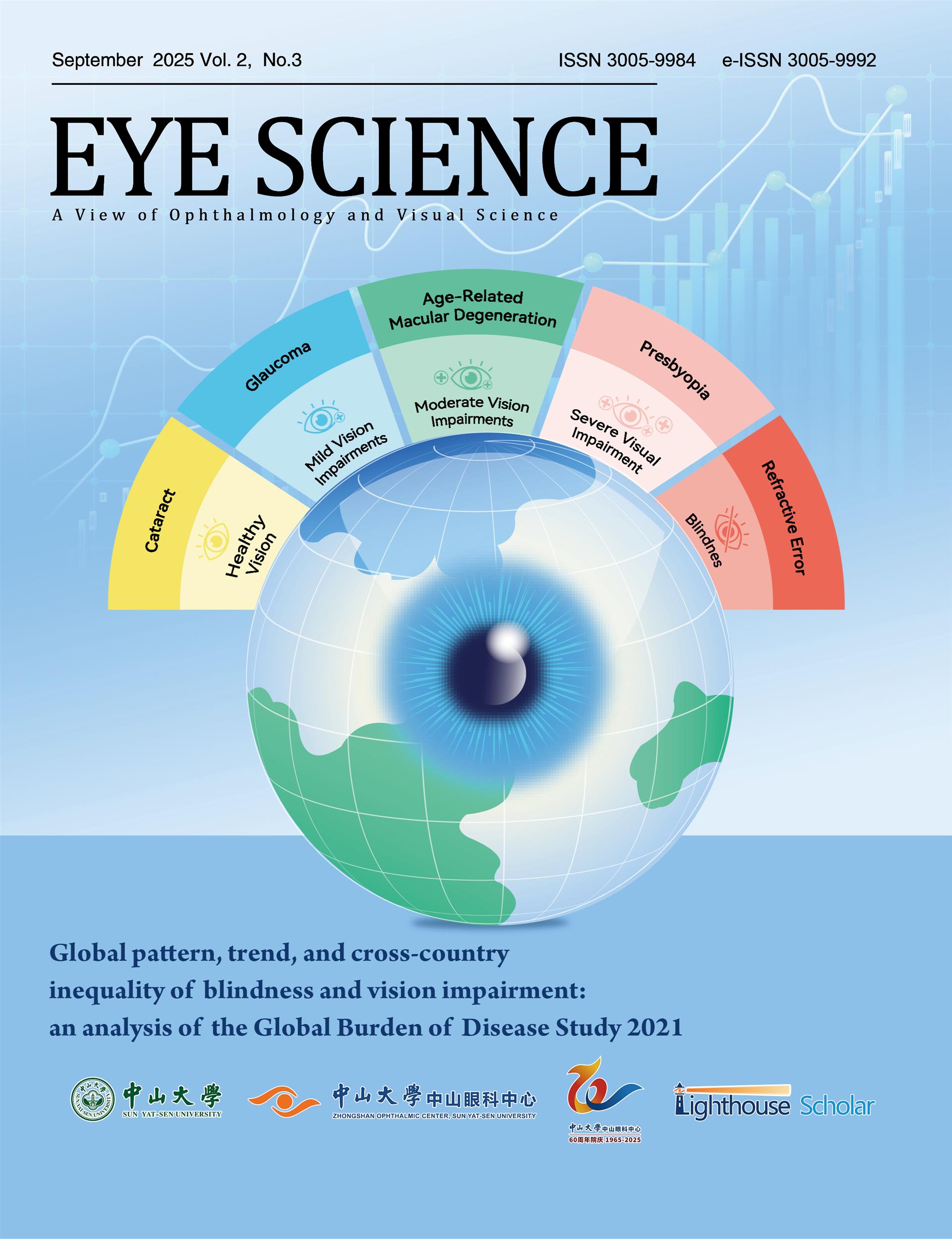1、Zhao QH, Zhao YE. Commentary review: challenges of intraocular lens implantation for congenital cataract infants. Int J Ophthalmol. 2021, 14(6): 923-930. DOI: 10.18240/ijo.2021.06.19. Zhao QH, Zhao YE. Commentary review: challenges of intraocular lens implantation for congenital cataract infants. Int J Ophthalmol. 2021, 14(6): 923-930. DOI: 10.18240/ijo.2021.06.19.
2、Trumler AA. Evaluation of pediatric cataracts and systemic disorders. Curr Opin Ophthalmol. 2011, 22(5): 365-379. DOI: 10.1097/ICU.0b013e32834994dc. Trumler AA. Evaluation of pediatric cataracts and systemic disorders. Curr Opin Ophthalmol. 2011, 22(5): 365-379. DOI: 10.1097/ICU.0b013e32834994dc.
3、Rahi JS, Dezateux C, British Congenital Cataract Interest Group. Measuring and interpreting the incidence of congenital ocular anomalies: lessons from a national study of congenital cataract in the UK. Invest Ophthalmol Vis Sci. 2001, 42(7): 1444-1448. Rahi JS, Dezateux C, British Congenital Cataract Interest Group. Measuring and interpreting the incidence of congenital ocular anomalies: lessons from a national study of congenital cataract in the UK. Invest Ophthalmol Vis Sci. 2001, 42(7): 1444-1448.
4、Singh R, Barker L, Chen SI, et al. Surgical interventions for bilateral congenital cataract in children aged two years and under. Cochrane Database Syst Rev. 2022, 9(9): CD003171. DOI: 10.1002/14651858.CD003171.pub3. Singh R, Barker L, Chen SI, et al. Surgical interventions for bilateral congenital cataract in children aged two years and under. Cochrane Database Syst Rev. 2022, 9(9): CD003171. DOI: 10.1002/14651858.CD003171.pub3.
5、SanGiovanni JP, Chew EY, Reed GF, et al. Infantile cataract in the collaborative perinatal project: prevalence and risk factors. Arch Ophthalmol. 2002, 120(11): 1559-1565. DOI: 10.1001/archopht.120.11.1559.SanGiovanni JP, Chew EY, Reed GF, et al. Infantile cataract in the collaborative perinatal project: prevalence and risk factors. Arch Ophthalmol. 2002, 120(11): 1559-1565. DOI: 10.1001/archopht.120.11.1559.
6、Hasin Y, Seldin M, Lusis A. Multi-omics approaches to disease. Genome Biol. 2017, 18(1): 83. DOI: 10.1186/s13059-017-1215-1. Hasin Y, Seldin M, Lusis A. Multi-omics approaches to disease. Genome Biol. 2017, 18(1): 83. DOI: 10.1186/s13059-017-1215-1.
7、Kowalczyk T, Ciborowski M, Kisluk J, et al. Mass spectrometry based proteomics and metabolomics in personalized oncology. Biochim Biophys Acta Mol Basis Dis. 2020, 1866(5): 165690. DOI: 10.1016/j.bbadis.2020.165690.Kowalczyk T, Ciborowski M, Kisluk J, et al. Mass spectrometry based proteomics and metabolomics in personalized oncology. Biochim Biophys Acta Mol Basis Dis. 2020, 1866(5): 165690. DOI: 10.1016/j.bbadis.2020.165690.
8、Ahmad Dar M, Arafah A, Ahmad Bhat K, et al. Multiomics technologies: role in disease biomarker discoveries and therapeutics. Brief Funct Genom. 2023, 22(2): 76-96. DOI: 10.1093/bfgp/elac017. Ahmad Dar M, Arafah A, Ahmad Bhat K, et al. Multiomics technologies: role in disease biomarker discoveries and therapeutics. Brief Funct Genom. 2023, 22(2): 76-96. DOI: 10.1093/bfgp/elac017.
9、Wang X, Fan D, Yang Y, et al. Integrative multi-omics approaches to explore immune cell functions: Challenges and opportunities. iScience. 2023, 26(4): 106359. DOI: 10.1016/j.isci.2023.106359.Wang X, Fan D, Yang Y, et al. Integrative multi-omics approaches to explore immune cell functions: Challenges and opportunities. iScience. 2023, 26(4): 106359. DOI: 10.1016/j.isci.2023.106359.
10、Lancaster SM, Sanghi A, Wu S, et al. A customizable analysis flow in integrative multi-omics. Biomolecules. 2020, 10(12): 1606. DOI: 10.3390/biom10121606. Lancaster SM, Sanghi A, Wu S, et al. A customizable analysis flow in integrative multi-omics. Biomolecules. 2020, 10(12): 1606. DOI: 10.3390/biom10121606.
11、Pettini F, Visibelli A, Cicaloni V, et al. Multi-omics model applied to cancer genetics. Int J Mol Sci. 2021, 22(11): 5751. DOI: 10.3390/ijms22115751. Pettini F, Visibelli A, Cicaloni V, et al. Multi-omics model applied to cancer genetics. Int J Mol Sci. 2021, 22(11): 5751. DOI: 10.3390/ijms22115751.
12、Delas F, Koller S, Feil S, et al. Novel CRYGC mutation in conserved ultraviolet-protective tryptophan (p.Trp131Arg) is linked to autosomal dominant congenital cataract. Int J Mol Sci. 2023, 24(23): 16594. DOI: 10.3390/ijms242316594. Delas F, Koller S, Feil S, et al. Novel CRYGC mutation in conserved ultraviolet-protective tryptophan (p.Trp131Arg) is linked to autosomal dominant congenital cataract. Int J Mol Sci. 2023, 24(23): 16594. DOI: 10.3390/ijms242316594.
13、Zhou Z, Zhao L, Guo Y, et al. A novel mutation in CRYGC mutation associated with autosomal dominant congenital cataracts and microcornea. Ophthalmol Sci. 2022, 2(1): 100093. DOI: 10.1016/j.xops.2021.100093.Zhou Z, Zhao L, Guo Y, et al. A novel mutation in CRYGC mutation associated with autosomal dominant congenital cataracts and microcornea. Ophthalmol Sci. 2022, 2(1): 100093. DOI: 10.1016/j.xops.2021.100093.
14、Peng Y, Zheng Y, Deng Z, et al. Case report: a de novo variant of CRYGC gene associated with congenital cataract and microphthalmia. Front Genet. 2022, 13: 866246. DOI: 10.3389/fgene.2022.866246. Peng Y, Zheng Y, Deng Z, et al. Case report: a de novo variant of CRYGC gene associated with congenital cataract and microphthalmia. Front Genet. 2022, 13: 866246. DOI: 10.3389/fgene.2022.866246.
15、Reis LM, Tyler RC, Muheisen S, et al. Whole exome sequencing in dominant cataract identifies a new causative factor, CRYBA2, and a variety of novel alleles in known genes. Hum Genet. 2013, 132(7): 761-770. DOI: 10.1007/s00439-013-1289-0. Reis LM, Tyler RC, Muheisen S, et al. Whole exome sequencing in dominant cataract identifies a new causative factor, CRYBA2, and a variety of novel alleles in known genes. Hum Genet. 2013, 132(7): 761-770. DOI: 10.1007/s00439-013-1289-0.
16、Chen D, Yang T, Zhu S. Novel likely pathogenic variants identified by panel-based exome sequencing in congenital cataract patients. J Ophthalmol. 2021, 2021: 3847409. DOI: 10.1155/2021/3847409. Chen D, Yang T, Zhu S. Novel likely pathogenic variants identified by panel-based exome sequencing in congenital cataract patients. J Ophthalmol. 2021, 2021: 3847409. DOI: 10.1155/2021/3847409.
17、Ha C, Kim D, Bak M, et al. CRYAB stop-loss variant causes rare syndromic dilated cardiomyopathy with congenital cataract: expanding the phenotypic and mutational spectrum of alpha-B crystallinopathy. J Hum Genet. 2024, 69(3-4): 159-162. DOI: 10.1038/s10038-023-01218-1. Ha C, Kim D, Bak M, et al. CRYAB stop-loss variant causes rare syndromic dilated cardiomyopathy with congenital cataract: expanding the phenotypic and mutational spectrum of alpha-B crystallinopathy. J Hum Genet. 2024, 69(3-4): 159-162. DOI: 10.1038/s10038-023-01218-1.
18、Javadiyan S, Craig JE, Souzeau E, et al. Recurrent mutation in the crystallin alpha A gene associated with inherited paediatric cataract. BMC Res Notes. 2016, 9: 83. DOI: 10.1186/s13104-016-1890-0. Javadiyan S, Craig JE, Souzeau E, et al. Recurrent mutation in the crystallin alpha A gene associated with inherited paediatric cataract. BMC Res Notes. 2016, 9: 83. DOI: 10.1186/s13104-016-1890-0.
19、Li R, Xu P, Zou Y, Li J, Gao Y. Analysis of novel compound heterozygous variants of the GJA8 gene in a child with congenital cataract..Zhonghua Yi Xue Yi Chuan Xue Za Zhi. 2022, 39(11): 1262-1265. DOI:10.3760/cma.j.cn511374-20211218-01005.Li R, Xu P, Zou Y, Li J, Gao Y. Analysis of novel compound heterozygous variants of the GJA8 gene in a child with congenital cataract..Zhonghua Yi Xue Yi Chuan Xue Za Zhi. 2022, 39(11): 1262-1265. DOI:10.3760/cma.j.cn511374-20211218-01005.
20、Berry V, Ionides ACW, Pontikos N, et al. Whole-genome sequencing reveals a recurrent missense mutation in the Connexin 46 (GJA3) gene causing autosomal-dominant lamellar cataract. Eye (Lond). 2018, 32(10): 1661-1668. DOI: 10.1038/s41433-018-0154-8. Berry V, Ionides ACW, Pontikos N, et al. Whole-genome sequencing reveals a recurrent missense mutation in the Connexin 46 (GJA3) gene causing autosomal-dominant lamellar cataract. Eye (Lond). 2018, 32(10): 1661-1668. DOI: 10.1038/s41433-018-0154-8.
21、Song S, Landsbury A, Dahm R, et al. Functions of the intermediate filament cytoskeleton in the eye lens. J Clin Invest. 2009, 119(7): 1837-1848. DOI: 10.1172/JCI38277. Song S, Landsbury A, Dahm R, et al. Functions of the intermediate filament cytoskeleton in the eye lens. J Clin Invest. 2009, 119(7): 1837-1848. DOI: 10.1172/JCI38277.
22、Goolam S, Carstens N, Ross M, et al. Familial congenital cataract, coloboma, and nystagmus phenotype with variable expression caused by mutation in PAX6 in a South African family. Mol Vis. 2018, 24: 407-413. Goolam S, Carstens N, Ross M, et al. Familial congenital cataract, coloboma, and nystagmus phenotype with variable expression caused by mutation in PAX6 in a South African family. Mol Vis. 2018, 24: 407-413.
23、Javadiyan S, Craig JE, Sharma S, et al. Novel missense mutation in the bZIP transcription factor, MAF, associated with congenital cataract, developmental delay, seizures and hearing loss (Aymé-Gripp syndrome). BMC Med Genet. 2017, 18(1): 52. DOI: 10.1186/s12881-017-0414-7. Javadiyan S, Craig JE, Sharma S, et al. Novel missense mutation in the bZIP transcription factor, MAF, associated with congenital cataract, developmental delay, seizures and hearing loss (Aymé-Gripp syndrome). BMC Med Genet. 2017, 18(1): 52. DOI: 10.1186/s12881-017-0414-7.
24、Ye X, Zhang G, Dong N, et al. Human pituitary homeobox-3 gene in congenital cataract in a Chinese family. Int J Clin Exp Med. 2015, 8(12): 22435-22439.Ye X, Zhang G, Dong N, et al. Human pituitary homeobox-3 gene in congenital cataract in a Chinese family. Int J Clin Exp Med. 2015, 8(12): 22435-22439.
25、Berry V, Pontikos N, Albarca-Aguilera M, et al. A recurrent splice-site mutation in EPHA2 causing congenital posterior nuclear cataract. Ophthalmic Genet. 2018, 39(2): 236-241. DOI: 10.1080/13816810.2017.1381977.Berry V, Pontikos N, Albarca-Aguilera M, et al. A recurrent splice-site mutation in EPHA2 causing congenital posterior nuclear cataract. Ophthalmic Genet. 2018, 39(2): 236-241. DOI: 10.1080/13816810.2017.1381977.
26、Chen X, Xu P, Li J, Niu Y, Kang R, Gao Y. Identification of a novel variant of NHS gene underlying Nance-Horan syndrome.. Zhonghua Yi Xue Yi Chuan Xue Za Zhi. 2021,,38(11): 1077-1080. DOI: 10.3760/cma.j.cn511374-20200817-00603.Chen X, Xu P, Li J, Niu Y, Kang R, Gao Y. Identification of a novel variant of NHS gene underlying Nance-Horan syndrome.. Zhonghua Yi Xue Yi Chuan Xue Za Zhi. 2021,,38(11): 1077-1080. DOI: 10.3760/cma.j.cn511374-20200817-00603.
27、Chograni M, Alahdal HM, Rejili M. Autosomal recessive congenital cataract is associated with a novel 4-bp splicing deletion mutation in a novel C10orf71 human gene. Hum Genomics. 2023, 17(1): 41. DOI: 10.1186/s40246-023-00492-6. Chograni M, Alahdal HM, Rejili M. Autosomal recessive congenital cataract is associated with a novel 4-bp splicing deletion mutation in a novel C10orf71 human gene. Hum Genomics. 2023, 17(1): 41. DOI: 10.1186/s40246-023-00492-6.
28、Damián A, Ionescu RO, Rodríguez de Alba M, et al. Fine breakpoint mapping by genome sequencing reveals the first large X inversion disrupting the NHS gene in a patient with syndromic cataracts. Int J Mol Sci. 2021, 22(23): 12713. DOI: 10.3390/ijms222312713. Damián A, Ionescu RO, Rodríguez de Alba M, et al. Fine breakpoint mapping by genome sequencing reveals the first large X inversion disrupting the NHS gene in a patient with syndromic cataracts. Int J Mol Sci. 2021, 22(23): 12713. DOI: 10.3390/ijms222312713.
29、Zheng B, Chen Q, Wang C, et al. Whole-genome sequencing revealed an interstitial deletion encompassing OCRL and SMARCA1 gene in a patient with Lowe syndrome. Mol Genet Genomic Med. 2019, 7(9): e876. DOI: 10.1002/mgg3.876. Zheng B, Chen Q, Wang C, et al. Whole-genome sequencing revealed an interstitial deletion encompassing OCRL and SMARCA1 gene in a patient with Lowe syndrome. Mol Genet Genomic Med. 2019, 7(9): e876. DOI: 10.1002/mgg3.876.
30、Gillespie RL, Urquhart J, Lovell SC, et al. Abrogation of HMX1 function causes rare oculoauricular syndrome associated with congenital cataract, anterior segment dysgenesis, and retinal dystrophy. Investig Ophthalmol Vis Sci. 2015, 56(2): 883-891. DOI: 10.1167/iovs.14-15861.Gillespie RL, Urquhart J, Lovell SC, et al. Abrogation of HMX1 function causes rare oculoauricular syndrome associated with congenital cataract, anterior segment dysgenesis, and retinal dystrophy. Investig Ophthalmol Vis Sci. 2015, 56(2): 883-891. DOI: 10.1167/iovs.14-15861.
31、Chograni M, Alkuraya FS, Maazoul F, et al. RGS6: a novel gene associated with congenital cataract, mental retardation, and microcephaly in a Tunisian family. Invest Ophthalmol Vis Sci. 2014, 56(2): 1261-1266. DOI: 10.1167/iovs.14-15198.Chograni M, Alkuraya FS, Maazoul F, et al. RGS6: a novel gene associated with congenital cataract, mental retardation, and microcephaly in a Tunisian family. Invest Ophthalmol Vis Sci. 2014, 56(2): 1261-1266. DOI: 10.1167/iovs.14-15198.
32、Chograni M, Alkuraya FS, Ourteni I, et al. Autosomal recessive congenital cataract, intellectual disability phenotype linked to STX3 in a consanguineous Tunisian family. Clin Genet. 2015, 88(3): 283-287. DOI: 10.1111/cge.12489.Chograni M, Alkuraya FS, Ourteni I, et al. Autosomal recessive congenital cataract, intellectual disability phenotype linked to STX3 in a consanguineous Tunisian family. Clin Genet. 2015, 88(3): 283-287. DOI: 10.1111/cge.12489.
33、Chacon-Camacho OF, Buentello-Volante B, Velázquez-Montoya R, et al. Homozygosity mapping identifies a GALK1 mutation as the cause of autosomal recessive congenital cataracts in 4 adult siblings. Gene. 2014, 534(2): 218-221. DOI: 10.1016/j.gene.2013.10.057. Chacon-Camacho OF, Buentello-Volante B, Velázquez-Montoya R, et al. Homozygosity mapping identifies a GALK1 mutation as the cause of autosomal recessive congenital cataracts in 4 adult siblings. Gene. 2014, 534(2): 218-221. DOI: 10.1016/j.gene.2013.10.057.
34、Mei S, Wu Y, Wang Y, et al. Disruption of PIKFYVE causes congenital cataract in human and zebrafish. eLife. 2022, 11: e71256. DOI: 10.7554/elife.71256.Mei S, Wu Y, Wang Y, et al. Disruption of PIKFYVE causes congenital cataract in human and zebrafish. eLife. 2022, 11: e71256. DOI: 10.7554/elife.71256.
35、Jones JL, Corbett MA, Yeaman E, et al. A 127 kb truncating deletion of PGRMC1 is a novel cause of X-linked isolated paediatric cataract. Eur J Hum Genet. 2021, 29(8): 1206-1215. DOI: 10.1038/s41431-021-00889-8.Jones JL, Corbett MA, Yeaman E, et al. A 127 kb truncating deletion of PGRMC1 is a novel cause of X-linked isolated paediatric cataract. Eur J Hum Genet. 2021, 29(8): 1206-1215. DOI: 10.1038/s41431-021-00889-8.
36、Javadiyan S, Craig JE, Souzeau E, et al. High-throughput genetic screening of 51 pediatric cataract genes identifies causative mutations in inherited pediatric cataract in south eastern Australia. G3 (Bethesda). 2017, 7(10): 3257-3268. DOI: 10.1534/g3.117.300109. Javadiyan S, Craig JE, Souzeau E, et al. High-throughput genetic screening of 51 pediatric cataract genes identifies causative mutations in inherited pediatric cataract in south eastern Australia. G3 (Bethesda). 2017, 7(10): 3257-3268. DOI: 10.1534/g3.117.300109.
37、Patel N, Anand D, Monies D, et al. Novel phenotypes and loci identified through clinical genomics approaches to pediatric cataract. Hum Genet. 2017, 136(2): 205-225. DOI: 10.1007/s00439-016-1747-6. Patel N, Anand D, Monies D, et al. Novel phenotypes and loci identified through clinical genomics approaches to pediatric cataract. Hum Genet. 2017, 136(2): 205-225. DOI: 10.1007/s00439-016-1747-6.
38、Ma A, Grigg JR, Flaherty M, et al. Genome sequencing in congenital cataracts improves diagnostic yield. Hum Mutat. 2021, 42(9): 1173-1183. DOI: 10.1002/humu.24240. Ma A, Grigg JR, Flaherty M, et al. Genome sequencing in congenital cataracts improves diagnostic yield. Hum Mutat. 2021, 42(9): 1173-1183. DOI: 10.1002/humu.24240.
39、Rossen JL, Bohnsack BL, Zhang KX, et al. Evaluation of genetic testing in a cohort of diverse pediatric patients in the United States with congenital cataracts. Genes (Basel). 2023, 14(3): 608. DOI: 10.3390/genes14030608.Rossen JL, Bohnsack BL, Zhang KX, et al. Evaluation of genetic testing in a cohort of diverse pediatric patients in the United States with congenital cataracts. Genes (Basel). 2023, 14(3): 608. DOI: 10.3390/genes14030608.
40、Consortium EP. An integrated encyclopedia of DNA elements in the human genome. Nature. 2012, 489(7414): 57-74. DOI: 10.1038/nature11247. Consortium EP. An integrated encyclopedia of DNA elements in the human genome. Nature. 2012, 489(7414): 57-74. DOI: 10.1038/nature11247.
41、Zhao N, Quicksall Z, Asmann YW, et al. Network approaches for omics studies of neurodegenerative diseases. Front Genet. 2022, 13: 984338. DOI: 10.3389/fgene.2022.984338. Zhao N, Quicksall Z, Asmann YW, et al. Network approaches for omics studies of neurodegenerative diseases. Front Genet. 2022, 13: 984338. DOI: 10.3389/fgene.2022.984338.
42、Lin X, Li H, Yang T, et al. Transcriptomics analysis of lens from patients with posterior subcapsular congenital cataract. Genes. 2021, 12(12): 1904. DOI: 10.3390/genes12121904. Lin X, Li H, Yang T, et al. Transcriptomics analysis of lens from patients with posterior subcapsular congenital cataract. Genes. 2021, 12(12): 1904. DOI: 10.3390/genes12121904.
43、Anand D, Al Saai S, Shrestha SK, et al. Genome-wide analysis of differentially expressed miRNAs and their associated regulatory networks in lenses deficient for the congenital cataract-linked Tudor domain containing protein TDRD7. Front Cell Dev Biol. 2021, 9: 615761. DOI: 10.3389/fcell.2021.615761. Anand D, Al Saai S, Shrestha SK, et al. Genome-wide analysis of differentially expressed miRNAs and their associated regulatory networks in lenses deficient for the congenital cataract-linked Tudor domain containing protein TDRD7. Front Cell Dev Biol. 2021, 9: 615761. DOI: 10.3389/fcell.2021.615761.
44、Tu C, Li H, Liu X, et al. TDRD7 participates in lens development and spermiogenesis by mediating autophagosome maturation. Autophagy. 2021, 17(11): 3848-3864. DOI: 10.1080/15548627.2021.1894058. Tu C, Li H, Liu X, et al. TDRD7 participates in lens development and spermiogenesis by mediating autophagosome maturation. Autophagy. 2021, 17(11): 3848-3864. DOI: 10.1080/15548627.2021.1894058.
45、Zhang J, Jiang N, Du C, et al. HSF4 transcriptionally activates autophagy by regulating ATG9a during lens terminal differentiation. Invest Ophthalmol Vis Sci. 2023, 64(7): 5. DOI: 10.1167/iovs.64.7.5. Zhang J, Jiang N, Du C, et al. HSF4 transcriptionally activates autophagy by regulating ATG9a during lens terminal differentiation. Invest Ophthalmol Vis Sci. 2023, 64(7): 5. DOI: 10.1167/iovs.64.7.5.
46、Xiao W, Yang W, Zhang X, et al. Endoplasmic reticulum stress and the lysosomal pathway play crucial roles in the progression of βB2-crystallin mutation-induced congenital cataracts in mice. Invest Ophthalmol Vis Sci. 2023, 64(4): 34. DOI: 10.1167/iovs.64.4.34. Xiao W, Yang W, Zhang X, et al. Endoplasmic reticulum stress and the lysosomal pathway play crucial roles in the progression of βB2-crystallin mutation-induced congenital cataracts in mice. Invest Ophthalmol Vis Sci. 2023, 64(4): 34. DOI: 10.1167/iovs.64.4.34.
47、Luo Y, Liu S, Yao K. Transcriptome-wide Investigation of mRNA/circRNA in miR-184 and Its r.57c > u Mutant Type Treatment of Human Lens Epithelial Cells. Mol Ther Nucleic Acids. 2017, 7: 71-80. DOI: 10.1016/j.omtn.2017.02.008. Luo Y, Liu S, Yao K. Transcriptome-wide Investigation of mRNA/circRNA in miR-184 and Its r.57c > u Mutant Type Treatment of Human Lens Epithelial Cells. Mol Ther Nucleic Acids. 2017, 7: 71-80. DOI: 10.1016/j.omtn.2017.02.008.
48、Torres-Arroyo A, Ruiz-Lara A, Castillo-Villanueva A, et al. Proteomics: a tool to develop novel diagnostic methods and unravel molecular mechanisms of pediatric diseases. Bol Med Hosp Infant Mex. 2017, 74(3): 233-240. DOI: 10.1016/j.bmhimx.2017.03.009.Torres-Arroyo A, Ruiz-Lara A, Castillo-Villanueva A, et al. Proteomics: a tool to develop novel diagnostic methods and unravel molecular mechanisms of pediatric diseases. Bol Med Hosp Infant Mex. 2017, 74(3): 233-240. DOI: 10.1016/j.bmhimx.2017.03.009.
49、Semba RD, Enghild JJ, Venkatraman V, et al. The human eye proteome project: perspectives on an emerging proteome. Proteomics. 2013, 13(16): 2500-2511. DOI: 10.1002/pmic.201300075. Semba RD, Enghild JJ, Venkatraman V, et al. The human eye proteome project: perspectives on an emerging proteome. Proteomics. 2013, 13(16): 2500-2511. DOI: 10.1002/pmic.201300075.
50、Theophanous CN, Wolfgeher DJ, Farooq AV, et al. Biomarkers of pediatric cataracts: a proteomics analysis of aqueous fluid. Int J Mol Sci. 2023, 24(10): 9040. DOI: 10.3390/ijms24109040. Theophanous CN, Wolfgeher DJ, Farooq AV, et al. Biomarkers of pediatric cataracts: a proteomics analysis of aqueous fluid. Int J Mol Sci. 2023, 24(10): 9040. DOI: 10.3390/ijms24109040.
51、Wu X, Liu Z, Zhang X, et al. Proteomics analysis and proteogenomic characterization of different physiopathological human lenses. BMC Ophthalmol. 2017, 17(1): 253. DOI: 10.1186/s12886-017-0642-9. Wu X, Liu Z, Zhang X, et al. Proteomics analysis and proteogenomic characterization of different physiopathological human lenses. BMC Ophthalmol. 2017, 17(1): 253. DOI: 10.1186/s12886-017-0642-9.
52、Van Looveren J, Van Gerwen V, Schildermans K, et al. Proteomic analysis of posterior capsular plaques in congenital unilateral cataract. Acta Ophthalmol. 2018, 96(8): e963-e969. DOI: 10.1111/aos.13782. Van Looveren J, Van Gerwen V, Schildermans K, et al. Proteomic analysis of posterior capsular plaques in congenital unilateral cataract. Acta Ophthalmol. 2018, 96(8): e963-e969. DOI: 10.1111/aos.13782.
53、Shang F, Wilmarth PA, Chang ML, et al. Newborn mouse lens proteome and its alteration by lysine 6 mutant ubiquitin. J Proteome Res. 2014, 13(3): 1177-1189. DOI: 10.1021/pr400801v. Shang F, Wilmarth PA, Chang ML, et al. Newborn mouse lens proteome and its alteration by lysine 6 mutant ubiquitin. J Proteome Res. 2014, 13(3): 1177-1189. DOI: 10.1021/pr400801v.
54、Bejarano E, Whitcomb EA, Pfeiffer RL, et al. Unbalanced redox status network as an early pathological event in congenital cataracts. Redox Biol. 2023, 66: 102869. DOI: 10.1016/j.redox.2023.102869. Bejarano E, Whitcomb EA, Pfeiffer RL, et al. Unbalanced redox status network as an early pathological event in congenital cataracts. Redox Biol. 2023, 66: 102869. DOI: 10.1016/j.redox.2023.102869.
55、Zhang A, Sun H, Wang P, et al. Modern analytical techniques in metabolomics analysis. Analyst. 2012, 137(2): 293-300. DOI: 10.1039/c1an15605e.Zhang A, Sun H, Wang P, et al. Modern analytical techniques in metabolomics analysis. Analyst. 2012, 137(2): 293-300. DOI: 10.1039/c1an15605e.
56、Grochowski ET, Pietrowska K, Kowalczyk T, et al. Omics in myopia. J Clin Med. 2020, 9(11): 3464. DOI: 10.3390/jcm9113464. Grochowski ET, Pietrowska K, Kowalczyk T, et al. Omics in myopia. J Clin Med. 2020, 9(11): 3464. DOI: 10.3390/jcm9113464.
57、Schrimpe-Rutledge AC, Codreanu SG, Sherrod SD, et al. Untargeted metabolomics strategies: challenges and emerging directions. J Am Soc Mass Spectrom. 2016, 27(12): 1897-1905. DOI: 10.1007/s13361-016-1469-y. Schrimpe-Rutledge AC, Codreanu SG, Sherrod SD, et al. Untargeted metabolomics strategies: challenges and emerging directions. J Am Soc Mass Spectrom. 2016, 27(12): 1897-1905. DOI: 10.1007/s13361-016-1469-y.
58、Roberts LD, Souza AL, Gerszten RE, et al. Targeted metabolomics. Curr Protoc Mol Biol. 2012, Chapter 30: Unit30.2.1-Unit30.224. DOI: 10.1002/0471142727.mb3002s98. Roberts LD, Souza AL, Gerszten RE, et al. Targeted metabolomics. Curr Protoc Mol Biol. 2012, Chapter 30: Unit30.2.1-Unit30.224. DOI: 10.1002/0471142727.mb3002s98.
59、Cajka T, Fiehn O. Toward merging untargeted and targeted methods in mass spectrometry-based metabolomics and lipidomics. Anal Chem. 2016, 88(1): 524-545. DOI: 10.1021/acs.analchem.5b04491. Cajka T, Fiehn O. Toward merging untargeted and targeted methods in mass spectrometry-based metabolomics and lipidomics. Anal Chem. 2016, 88(1): 524-545. DOI: 10.1021/acs.analchem.5b04491.
60、Chen H, Yu Y, Hu L, et al. Metabolomic profiling of the aqueous humor in patients with pediatric cataract. Exp Eye Res. 2024, 243: 109906. DOI: 10.1016/j.exer.2024.109906. Chen H, Yu Y, Hu L, et al. Metabolomic profiling of the aqueous humor in patients with pediatric cataract. Exp Eye Res. 2024, 243: 109906. DOI: 10.1016/j.exer.2024.109906.




























